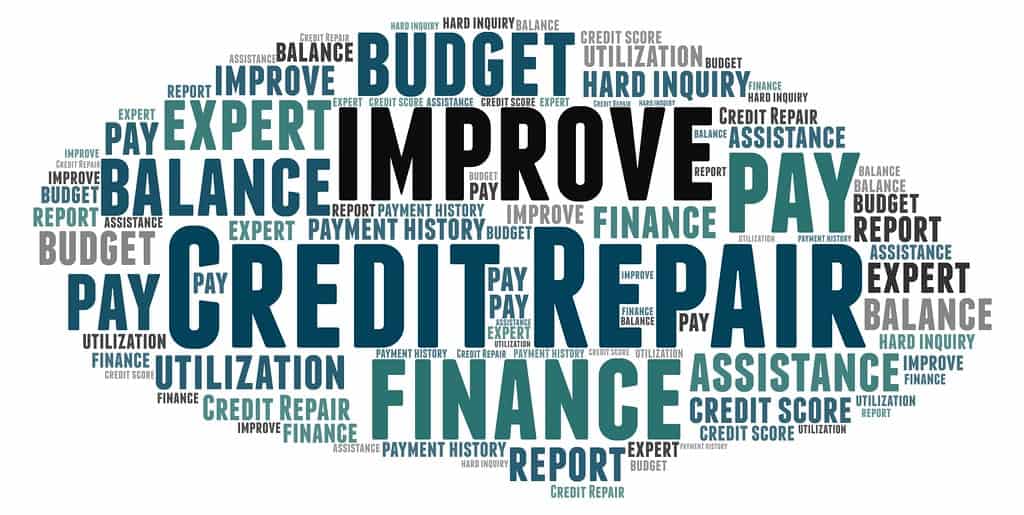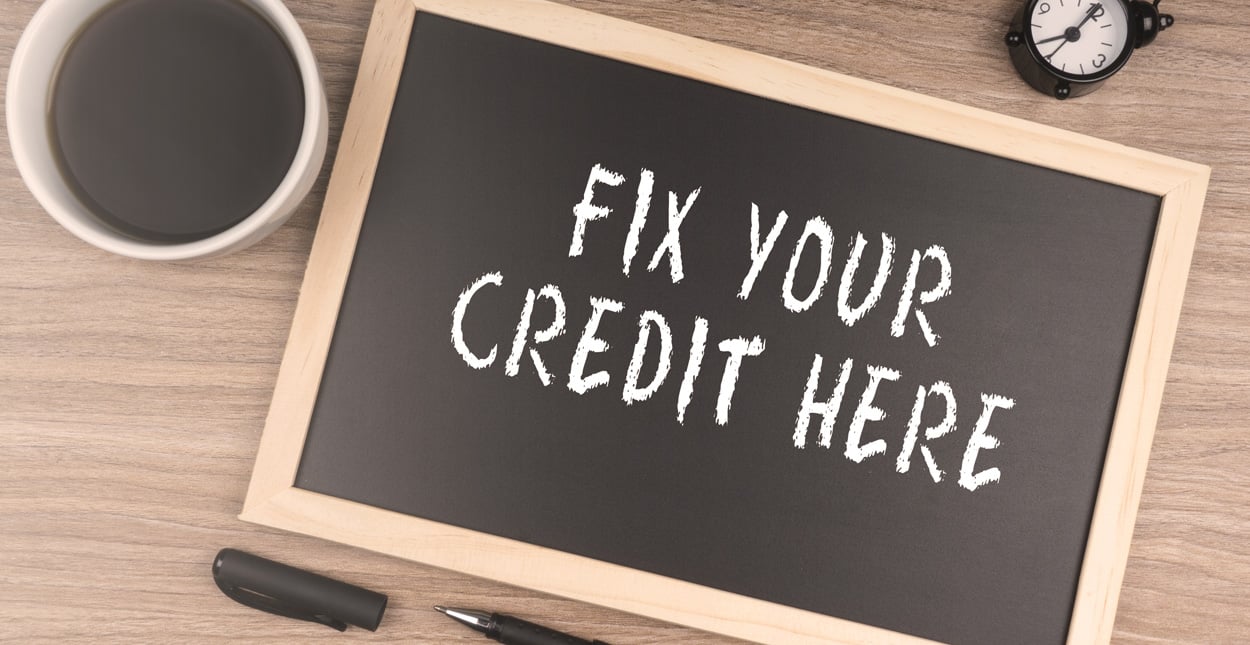So, you’ve been diligently working on repairing your credit, taking steps to improve your financial standing and move towards a brighter future. But have you ever considered the power of images in this process? That’s right, we’re talking about Credit Repair Images – a groundbreaking approach that combines visual elements with credit repair techniques. This innovative method aims to enhance your credit repair journey, providing you with a unique way to stay motivated, track progress, and keep your financial goals in sight. Let’s delve into the fascinating world of Credit Repair Images and discover how they can revolutionize your path to financial freedom.
Importance of Visuals in Credit Repair
When it comes to credit repair, visuals play a crucial role in enhancing understanding, creating a positive outlook, and building trust and credibility. In a world where information overload is the norm, visuals provide a way to communicate complex concepts and data in a more digestible and engaging format. Whether it’s before and after images, infographics, charts and graphs, credit score representations, or financial success stories, the strategic use of visuals can greatly enhance the effectiveness of credit repair strategies.
Enhancing Understanding through Visuals
One of the major benefits of using visuals in credit repair is the ability to enhance understanding. Credit repair can often be a complex and intimidating process, filled with unfamiliar terms and concepts. By using images, you can simplify these ideas and make them more accessible to a wider audience. Visuals can break down complex processes, explain credit repair strategies, and educate individuals on the factors that affect their credit scores.

Creating a Positive Outlook
Credit repair is a journey that requires time, patience, and determination. It’s easy for individuals to become discouraged and lose motivation along the way. Visuals can help create a positive outlook by highlighting the progress made and the potential for improvement. Before and after images, for example, can show individuals the positive changes that can be achieved through credit repair. This visual reinforcement can help individuals stay motivated, as they can see tangible evidence of their efforts.
Building Trust and Credibility
In the world of credit repair, trust and credibility are essential. Visuals can play a significant role in establishing and maintaining this trust. When individuals see real-life examples of successful credit repair, they are more likely to trust the process and the information being provided. Additionally, visually representing data, such as credit scores and financial progress, can add an extra layer of credibility to the information being shared. It shows that the credit repair provider has access to accurate data and can present it in an easily understandable format.

Types of Credit Repair Images
Let’s take a closer look at the different types of credit repair images that can be utilized to enhance the credit repair process and engage individuals in a meaningful way.
Before and After Images
Before and after images are powerful tools in credit repair. By showing the transformation of someone’s credit score or financial situation, this type of visual can inspire hope and motivate individuals to take action. Before and after images provide a tangible representation of progress and can serve as a reminder that positive change is possible.
Infographics
Infographics are another valuable type of image that can effectively convey complex information. They combine text, images, and data to present information in a visually appealing and easy-to-understand manner. Infographics can be used to explain the credit repair process step by step, break down the factors that affect credit scores, and compare different credit repair strategies. The visual nature of infographics allows individuals to quickly grasp information and retain it more effectively.
Charts and Graphs
Charts and graphs are vital for visualizing credit data and tracking progress. They can be used to track credit score progression over time, display outstanding debts and payment schedules, and illustrate the burden of high interest rates. By presenting data in a graphical format, individuals can easily interpret trends, identify areas that need improvement, and celebrate milestones achieved. Charts and graphs provide a visual representation of progress that is both informative and motivating.
Credit Score Representation
Visualizing credit scores is an effective way to provide individuals with a clear understanding of their current financial standing. Gauge or thermometer graphics can be used to represent credit scores, with different colors indicating different credit ratings. This visual representation allows individuals to see their creditworthiness at a glance and helps them set goals for improvement. Additionally, visualizing credit limit utilization through pie charts or progress bars can help individuals understand how their credit utilization impacts their overall credit health.
Financial Success Stories
One of the most powerful ways to motivate individuals in credit repair is by sharing inspiring financial success stories. Displaying real-life examples of individuals who have successfully improved their credit can provide hope and serve as proof that the credit repair process works. These success stories can highlight positive turnarounds, demonstrate the potential for improvement, and motivate individuals to take action. When individuals see others who have achieved financial success through credit repair, they are more likely to believe in the process and take steps towards their own financial recovery.
Using Before and After Images
One of the most impactful ways to use credit repair images is by employing before and after images to showcase the progress made by individuals. These images can highlight credit score improvements, demonstrate debt reduction, and showcase successful disputes.
Highlighting Credit Score Improvements
Before and after images are an excellent way to showcase the improvement in an individual’s credit score. By presenting a “before” image of a low credit score and an “after” image of an improved credit score, individuals can easily see the positive impact of their credit repair efforts. These images provide a visual representation of progress and serve as a powerful motivator to continue working towards a better credit score.
Showing Debt Reduction
Debt reduction is a key objective for many individuals seeking credit repair. Before and after images can effectively demonstrate the reduction in outstanding debt. By presenting a visual comparison of the amount of debt before and after credit repair, individuals can see the progress made in reducing their financial burden. This visual representation can inspire hope and encourage individuals to continue their efforts to address and eliminate their debts.
Demonstrating Successful Disputes
Credit report disputes are a common strategy in credit repair. By using before and after images, credit repair providers can demonstrate the successful resolution of disputed items on a credit report. For example, an image can show an inaccurate negative item on a credit report before it was disputed and subsequently removed, followed by an after image showing an updated and improved credit report. These images provide tangible evidence of successful disputes and reinforce the benefits of credit repair.

Creating Informative Infographics
Infographics are a highly effective way to convey important credit repair information in a visually engaging format. They can be used to explain the credit repair process, break down credit score factors, and compare different repair strategies.
Explaining Credit Repair Process
The credit repair process can often be confusing and overwhelming for individuals. Infographics can simplify this process by breaking it down into easy-to-understand steps. By providing a visual representation of each step, individuals can follow along and gain a clear understanding of what is involved in the credit repair process. Infographics can include text, icons, and images to effectively guide individuals through the necessary actions and help them navigate their credit repair journey.
Breaking Down Credit Score Factors
Understanding the factors that impact credit scores is essential for effective credit repair. Infographics can visually break down these factors, such as payment history, credit utilization, length of credit history, and more. By presenting each factor with clear visuals and accompanying explanations, individuals can better understand how their actions and behaviors affect their credit scores. This knowledge empowers individuals to make informed decisions and take the necessary steps to improve their creditworthiness.
Comparing Different Repair Strategies
Credit repair is not a one-size-fits-all approach. There are various strategies and methodologies that individuals can employ to address their specific credit issues. Infographics can be used to compare these different repair strategies, highlighting the pros, cons, and potential outcomes of each approach. By visually presenting this information, individuals can make more informed decisions about which strategy aligns best with their needs and goals. Infographics provide a comprehensive overview that simplifies the decision-making process, making it easier for individuals to take the first steps towards credit repair.
Visualizing Credit Data with Charts and Graphs
Charts and graphs are valuable tools for visualizing credit data and tracking progress. They can be used to track credit score progression, display debts and payments, and illustrate the impact of high interest rates.
Tracking Credit Score Progression
A credit score is a key measure of an individual’s creditworthiness. By using charts and graphs, individuals can visually track their credit score progression over time. Line charts, for example, can show the trend of credit scores, allowing individuals to identify patterns and monitor their progress. This visual representation of credit score changes helps individuals understand the impact of their actions on their creditworthiness and motivates them to continue working towards improvement.
Displaying Debts and Payments
Managing debts effectively is a crucial aspect of credit repair. Charts and graphs can be utilized to visually display outstanding debts and payment schedules. By presenting this information in a clear and organized manner, individuals can better understand the status of their debts and plan their repayment strategies accordingly. For example, a bar chart can illustrate the different types of debts, their respective balances, and the progress made in paying them off. This visual representation of debts and payments allows individuals to track their financial progress and stay motivated on their credit repair journey.
Illustrating Burden of High Interest
High interest rates can significantly impact an individual’s financial well-being. Charts and graphs can effectively illustrate the burden of high interest by visually representing the cost of paying interest over time. For example, a pie chart can show the portion of monthly payments that goes towards interest, highlighting the potential savings that can be achieved by reducing interest rates through credit repair. This visual representation helps individuals understand the financial consequences of high interest and encourages them to take action to alleviate this burden.

Representing Credit Scores in Images
Visualizing credit scores can provide individuals with a clear understanding of their current financial standing. By using gauge or thermometer graphics, color-coded credit ratings, and visual representations of credit limit utilization, individuals can grasp their creditworthiness at a glance.
Using Gauge or Thermometer Graphics
Gauge or thermometer graphics are effective visual tools for representing credit scores. These graphics use color-coded indicators to show credit ratings, with a scale that ranges from poor to excellent. Individuals can quickly assess their creditworthiness by referring to the gauge or thermometer image. This visual representation simplifies the understanding of credit scores and helps individuals set goals for improvement. It also serves as a motivating factor, as individuals can easily see their progress as they move from one color zone to another.
Color-Coded Credit Ratings
Color coding is a simple yet powerful way to represent credit ratings visually. By assigning different colors to different credit rating categories, individuals can easily identify their credit standing. For example, green can represent excellent credit, while red can indicate poor credit. This color-coded visual representation provides a quick and intuitive way for individuals to assess their creditworthiness and understand where they stand in the credit spectrum. It simplifies a complex concept and allows individuals to make informed decisions based on their current credit rating.
Visualizing Credit Limit Utilization
Credit limit utilization is an important factor in determining credit scores. Visualizing this aspect can help individuals understand how their credit utilization impacts their overall credit health. Pie charts or progress bars can be used to represent credit limits and visualize how much of the available credit has been utilized. This visual representation allows individuals to see at a glance whether they are staying within recommended credit utilization percentages and empowers them to make informed decisions regarding their credit card usage. By understanding the impact of credit limit utilization on their credit scores, individuals can take steps to strategically manage their credit and optimize their creditworthiness.
Sharing Inspiring Financial Success Stories
One of the most effective ways to inspire individuals in credit repair is by sharing real-life examples of financial success stories. Displaying these stories through images can highlight positive turnarounds, demonstrate the potential for improvement, and motivate individuals to take action.
Displaying Real-Life Examples
Real-life examples of individuals who have successfully improved their credit can be a powerful source of inspiration. By sharing these examples through visual representation, individuals can see the results that are achievable through credit repair. Whether it’s images of individuals who have paid off significant amounts of debt, purchased a home, or achieved a high credit score, these stories provide tangible evidence that credit repair works. This visual representation of real-life success stories can instill hope in individuals facing credit challenges and motivate them to take the necessary steps towards their own financial success.
Highlighting Positive Turnarounds
Credit repair often involves turning around challenging financial situations. By highlighting positive turnarounds through visual images, individuals can see the transformative effects of credit repair on an individual’s life. For example, images can show someone who was previously denied credit but has now successfully obtained a loan or credit card. These before and after images serve as a visual reminder that with perseverance and strategic credit repair, individuals can overcome financial obstacles and achieve their goals. The power of visual representation in highlighting positive turnarounds cannot be overstated, as it provides individuals with tangible evidence that change is possible.
Motivating Individuals to Take Action
Visual representations of financial success stories can serve as powerful motivators for individuals who are hesitant to start their credit repair journey. By showing images of individuals who have taken control of their finances, improved their credit scores, and achieved financial milestones, credit repair providers can ignite motivation and action. These images offer a glimpse of what can be accomplished through credit repair and encourage individuals to envision their own financial success. By visualizing the possibilities, individuals are more likely to take the first steps towards their credit repair goals.

Best Practices for Credit Repair Images
When using visuals in credit repair, it’s important to follow certain best practices to ensure their effectiveness and impact. Choosing high-quality images, ensuring accessibility and compliance, and maintaining consistent branding are key considerations.
Choosing High-Quality Images
High-quality images are essential for creating a professional and visually appealing credit repair experience. Blurry or pixelated images can detract from the message and decrease the overall impact of the visuals. When selecting images, prioritize those that are clear, well-composed, and visually engaging. This attention to detail will help create a positive impression on individuals and enhance their overall perception of the credit repair process.
Ensuring Accessibility and Compliance
Accessibility and compliance are crucial factors to consider when using visuals in credit repair. Images should be accessible to individuals with visual impairments by including alternative text descriptions that can be read by screen readers. Additionally, ensure that the visuals comply with relevant laws and regulations, including copyright restrictions. It’s essential to obtain proper permissions and licenses for any images used, as infringing copyrights can lead to legal and reputational issues.
Maintaining Consistent Branding
Consistency in branding is key to establishing trust and credibility. When using visuals in credit repair, it’s important to maintain a consistent visual identity that aligns with your brand. This can include consistent color schemes, typography, and design elements. By ensuring that your visuals are in line with your brand’s identity, individuals will have a cohesive and recognizable experience, reinforcing your credibility as a trusted credit repair provider.
Avoiding Common Mistakes with Credit Repair Images
While visuals can greatly enhance the credit repair process, it’s important to avoid common mistakes that can undermine their effectiveness and credibility. Misrepresenting results, using unverified or expired data, and infringing copyrights are pitfalls to be aware of.
Misrepresenting Results
Accuracy and transparency are crucial when presenting credit repair results through images. It’s important to accurately represent the progress and outcomes achieved through credit repair efforts. Misrepresenting results by presenting manipulated or falsified before and after images, for example, can severely damage trust and credibility. Individuals rely on honest and accurate information to make informed decisions about their credit repair journey. It’s essential to prioritize integrity when using visuals to showcase credit repair results.
Using Unverified or Expired Data
Data integrity is another critical aspect of using visuals in credit repair. When presenting data through images, it’s crucial to ensure that the data is up-to-date, accurate, and verifiable. Using unverified or expired data can lead to misleading representations and can erode trust in the credit repair process. By sourcing and verifying data from reputable sources, credit repair providers can maintain credibility and provide individuals with reliable information to guide their credit repair journey.
Infringing Copyrights
Using copyrighted images without proper permissions or licenses is a serious violation that can have legal and reputational consequences. It’s essential to respect the intellectual property rights of others and obtain the necessary permissions to use images in credit repair materials. There are numerous platforms that offer royalty-free or licensed images that can be used legally. By ensuring compliance with copyright laws, credit repair providers can avoid legal disputes and protect their reputation as trustworthy and ethical professionals.
Using Credit Repair Images Responsibly
When using credit repair images, it’s important to use them responsibly by providing context and explanation, avoiding overly exaggerated claims, and striking a balance between realism and optimism.
Providing Context and Explanation
Images can be powerful tools for communication, but it’s important to provide context and explanation to ensure that individuals interpret them correctly. When using credit repair images, it’s crucial to accompany them with clear and concise explanations of what they represent and the implications they have for an individual’s credit repair journey. By providing context and explanations, individuals can fully understand the message behind the visual and make informed decisions based on accurate information.
Avoiding Overly Exaggerated Claims
While it’s important to inspire and motivate individuals through credit repair images, it’s equally important to avoid making overly exaggerated claims. Promising unrealistic outcomes or instant credit repair can lead to disappointment and can undermine the credibility of credit repair providers. It’s essential to strike a balance between showcasing the potential for improvement and setting realistic expectations. By using visuals that represent achievable goals and highlighting the effort required to attain them, individuals can approach their credit repair journey with a more realistic and sustainable mindset.
Balancing Realism and Optimism
Credit repair is a process that requires time and effort. When using visuals in credit repair, it’s important to strike a balance between realism and optimism. Visuals that represent progress and positive outcomes are essential for inspiring and motivating individuals. However, it’s equally important to convey the realistic challenges and setbacks that individuals may encounter along the way. By presenting a balanced visual narrative that acknowledges the ups-and-downs of credit repair, individuals can have a more accurate understanding of the credit repair journey and be better prepared to navigate its challenges.
In conclusion, visuals play a vital role in credit repair by enhancing understanding, creating a positive outlook, and building trust and credibility. Before and after images, infographics, charts and graphs, credit score representations, and financial success stories are just some of the powerful tools that can be used to engage individuals in the credit repair process. By effectively utilizing these visuals, credit repair providers can simplify complex concepts, visualize progress, and inspire individuals to take action towards achieving financial stability and a brighter future.
